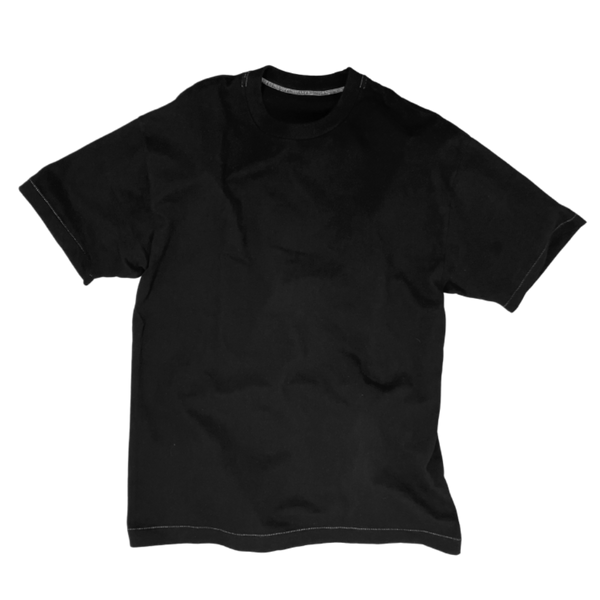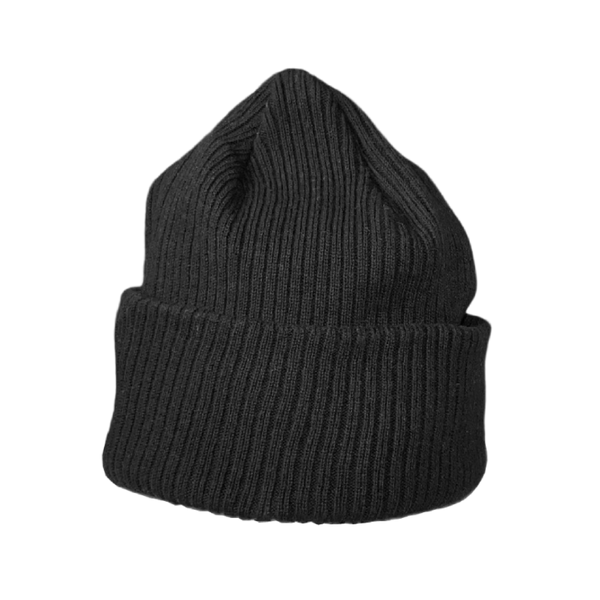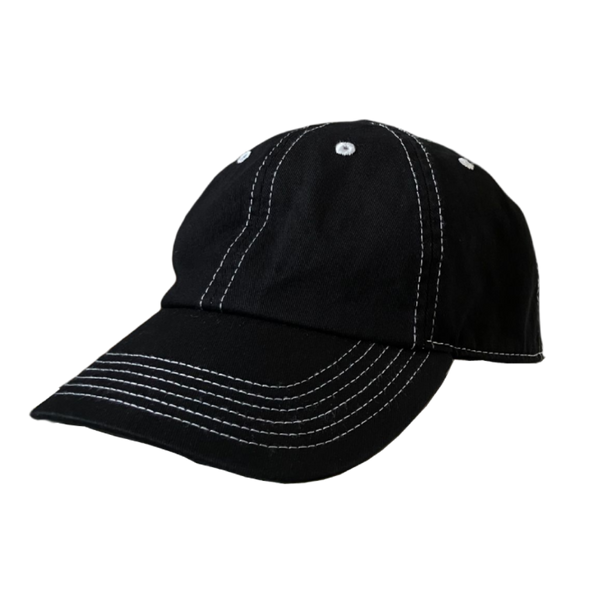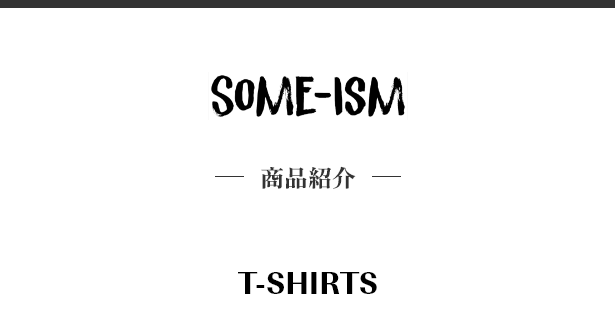Kyoto Black "Kyo Kuromontsuki Zome"
 Have you heard of the Kyo Kuromontsuki Zome, which is used to dye the Kimono worn in Japanese traditional weddings and other celebratory events?
Have you heard of the Kyo Kuromontsuki Zome, which is used to dye the Kimono worn in Japanese traditional weddings and other celebratory events?It is a general term for the dyeing technique of dyeing silk black and the technique of painting family crests, and is mainly produced in Kyoto Prefecture.It is characterized by its deep, elegant black color.

Made-in-Tokyo Tubular T-shirt, Kyoto Black "Kyo Kuromontsuki Zome"
¥ 11,000 (tax included)







 Kyo Kuromontsuki Zome is one of Japan's proud dyeing techniques that has been developed to date using Kyoto's groundwater, which is suitable for dyeing, and the dyeing techniques of craftsmen who are relentless in their pursuit of the finest black.It has been designated as a traditional craft by the Ministry of Economy, Trade and Industry.
Kyo Kuromontsuki Zome is one of Japan's proud dyeing techniques that has been developed to date using Kyoto's groundwater, which is suitable for dyeing, and the dyeing techniques of craftsmen who are relentless in their pursuit of the finest black.It has been designated as a traditional craft by the Ministry of Economy, Trade and Industry.The history of black dyeing dates back to the 10th century, and it is said that it was established as black crest dyeing in the Edo period around the 17th century.At that time, it was used for the robes of monks and the coat of arms of samurai families.Since the beginning of the Meiji era (1868〜1912), demand has increased for Haori and Hakama with black crests, which are formal wear worn during ceremonial occasions.
Even today, it is worn as the primary formal attire in black Tomesode worn for celebratory events such as weddings, mourning clothes worn at funerals, and costumes for traditional performing arts such as Kabuki and Noh theater, Gion Geisha, and Sumo wrestling.
 Our T-shirts, baseball caps, and cotton knit caps are dyed by Kyoto Montsuki Co., Ltd., a pioneer of Kyo Kuromontsuki Zome.
Our T-shirts, baseball caps, and cotton knit caps are dyed by Kyoto Montsuki Co., Ltd., a pioneer of Kyo Kuromontsuki Zome.
 The company possesses a special technique called “Shinkuro Kako” which is a special technique among Kyo Kuromontsuki Zome.
The company possesses a special technique called “Shinkuro Kako” which is a special technique among Kyo Kuromontsuki Zome.


By applying the Shinkuro Kako finish, we have created a water-repellent item that has a traditional black color with a deep elegance and silky feel.

 Our T-shirt is manufactured at a factory in Tokyo that has been in business for over 80 years.
Our T-shirt is manufactured at a factory in Tokyo that has been in business for over 80 years.


The body is tubular with no seams on the sides. In addition, the cuffs and hem adopt blind stitching that is seen on vintage T-shirts.
These T-shirts are carefully dyed by Kyo Kuromontsuki Zome craftsmen in Kyoto.
Because of the unique Shinkuro Kako, the black color is so deep that it suppresses the reflection of light to give the T-shirt a depth and elegance.



 Our knit cap is 100% cotton made by NEWHATTAN.
Our knit cap is 100% cotton made by NEWHATTAN.



Made-in-Tokyo Tubular T-shirt, Kyoto Black "Kyo Kuromontsuki Zome"
¥ 11,000 (tax included)

It is good for both in a city or outdoors look and can be worn in all seasons.

The baseball cap is 100% cotton made by NEWHATTAN and has our brand SOME-ISM logo embroidered on the back of the cap.

The cap is a classic 6-panel design with an adjustable back-strap and low-depth crown.
11cm high and the longest part of the brim is 7cm.
 Kyo Kuromontsuki Zome is water-repellent and gives a deep elegance and silky feel to the cap.
Kyo Kuromontsuki Zome is water-repellent and gives a deep elegance and silky feel to the cap.
 Shinkuro Kako is a technique uniquely developed by Kyoto Montsuki Co., Ltd. that makes the black color stand out by attaching a special dye to the fibers, suppressing light reflection and absorbing light.
Shinkuro Kako is a technique uniquely developed by Kyoto Montsuki Co., Ltd. that makes the black color stand out by attaching a special dye to the fibers, suppressing light reflection and absorbing light.

 Shinkuro Kako is a technique uniquely developed by Kyoto Montsuki Co., Ltd. that makes the black color stand out by attaching a special dye to the fibers, suppressing light reflection and absorbing light.
Shinkuro Kako is a technique uniquely developed by Kyoto Montsuki Co., Ltd. that makes the black color stand out by attaching a special dye to the fibers, suppressing light reflection and absorbing light.In addition, Shinkuro Kako not only creates a beautiful black finish, but also makes the fabric somewhat water proof and gives it a silky feel. The company’s dyeing is also focused on safety.
The company’s dyeing is also focused on safety.
 The company’s dyeing is also focused on safety.
The company’s dyeing is also focused on safety.In fact, the dye called Azo dye, which is often used in Montsuki dyeing, is prohibited from being used on clothing other than traditional Japanese clothing under the Household Goods Regulation Act.
Twenty years ago, they created a unique black color by switching to reactive dyeing, which does not use Azo dyes, in pursuit of safety. Since reactive dyes are used instead of Azo dyes, the color is resistant to fading.







Made-in-Tokyo Tubular T-shirt, Kyoto Black "Kyo Kuromontsuki Zome"
¥ 11,000 (tax included)
It has been designated as a traditional craft by the Ministry of Economy, Trade and Industry.

Since the beginning of the Meiji era (1868〜1912), demand has increased for Haori and Hakama with black crests, which are formal wear worn during ceremonial occasions.
Even today, it is worn as the primary formal attire in black Tomesode worn for celebratory events such as weddings, mourning clothes worn at funerals, and costumes for traditional performing arts such as Kabuki and Noh theater, Gion Geisha, and Sumo wrestling.
At its peak, there were more than 100 Kuromontsuki cooperative members, but currently there are only three, and the association will be disbanded in March 2022.
The traditional black dyeing industry is on the verge of collapse.
In order to popularize Kyo Kuromontsuki Zome, in addition to existing Kimono fans, I would like to encourage consumers who are unfamiliar with this dyeing technique to pick up our products and learn about the benefits of it. We hope that this tradition will survive.
I sympathized with Kyoto Montsuki Co., Ltd.’s vision “Traditional industries cannot be inherited unless traditional industry techniques evolve to fit modern lifestyles.”
We would like to change this current situation by leveraging the knowledge and experience we have cultivated in the fashion industry both in Japan and around the world to create products that make a variety of customers think, “It's cool!” and “I want to wear it!”.

The company utilizes the technology that it has cultivated over many years to dye silk crests, which are extremely difficult to dye, and uses a unique technique of deep black processing on natural fibers such as cotton, linen, and wool, creating products that have not been found in western clothing up until now, achieving a deep black dyeing technique.
As a result, they succeeded in developing a unique technique called Shinkuro Kako.


1. Creating a dyeing solution by mixing the uniquely developed dye and water.
2. Adding a non-toxic auxiliary agent to the dyeing machine.

4. Rinsing and washing over and over again.

6. Finishing with Shinkuro Kako that is not only creates a beautiful black finish, but also makes the fabric somewhat water proof and gives it a silky feel.
7. Dehydrating and dry in the sun, again. The entire process takes two weeks.

Made-in-Tokyo Tubular T-shirt, Kyoto Black "Kyo Kuromontsuki Zome"
¥ 11,000 (tax included)

SOME-ISM is a platform that connects dyers and customers. The meaning of SOME-ISM is SOME = to dye, ISM = principle.There are various traditional dyeing cultures across Japan, such as Aizome (Japanese Indigo dyeing) in Tokushima and Doro Zome (mud dyeing) in Amami Oshima. These dyeing techniques usually use natural materials so they are characterized by natural colors and have been loved by Japanese people for many years. However, 99.99% of the clothing we currently wear every day is dyed with synthetic dyes. Since the late 1800s, the chemicalization of clothing dyes has progressed, leading to an era of mass production and mass consumption, which has placed a huge burden on the environment. As a result, the United Nations Conference on Trade and Development ranked the fashion industry as the second most polluting industry in the world. In addition, demand for the traditional Japanese dyeing techniques decreased dramatically due to the demand for more efficient mass production. Coupled with a decline in the labor force in the dyeing industry due to the declining birthrate, Japan's traditional dyeing culture is in decline.By meeting artisans from various dyeing industries, we are able to witness first-hand the beauty of the delicate colors expressed by the skilled hands of artisans, the efficacy of products obtained through natural dyeing, and the passion of artisans for their techniques. I made it. At the same time, I learned about the difficult situation that culture and business were in.After thinking about how we could help preserve this wonderful culture and technology for future generations, we thought that we could help craftsmen with online marketing and e-commerce, which they are weak at, so we started creating SOME-IMS, which connects craftsmen and customers. Ta. Through SOME-ISM , we want people not only in Japan but all over the world to learn about Japanese dyeing culture.










